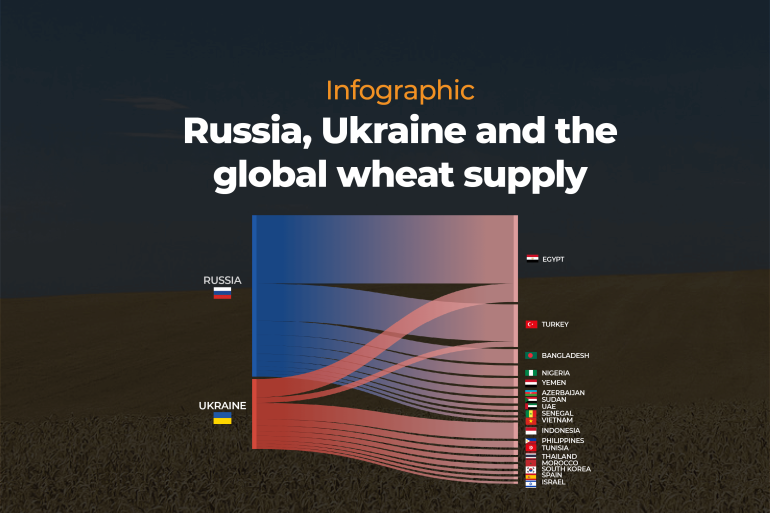•More than a quarter of the world’s wheat exports come from Russia and Ukraine.
By Hanna Duggal and Mohammed Haddad
Russia is the world’s largest exporter of wheat, accounting for more than 18 percent of international exports.
In 2019, Russia and Ukraine together exported more than a quarter (25.4 percent) of the world’s wheat, according to the Observatory of Economic Complexity (OEC).
Wheat is the second most-produced grain in the world after corn. For centuries, it has been cultivated by humans and is essential for making bread, pasta and other food staples.
In recent months, the United States and its allies have warned that Russia – which has 100,000 soldiers massed on the border with Ukraine – could invade at any moment.
Russia has denied that and opposes NATO bases near its borders.
In the event of outright aggression, the flow of wheat and grain could be disrupted. Economic sanctions or military action could have a significant effect on the cost of food as importers seek to find alternatives.
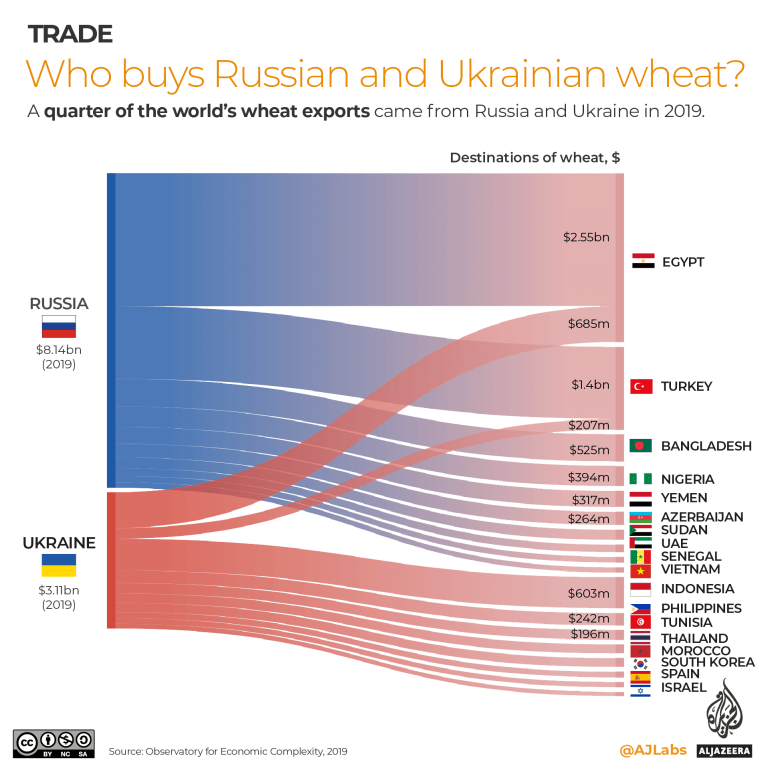
In 2019, Egypt, Turkey and Bangladesh bought more than half of Russia’s wheat.
Egypt is the world’s biggest importer of wheat. It spends more than $4bn annually to feed its population of over 100 million.
Combined, Russia and Ukraine cover more than 70 percent of Egypt’s imported wheat demand.
Turkey is also a big spender on Russian and Ukrainian wheat with 74 percent of its imports worth $1.6bn coming from those two countries in 2019.
In the crop year of 2021-22, Turkey was the largest buyer of Russian wheat, purchasing 4.5 million metric tonnes as of December 30, 2021. Egypt bought 3.2 million metric tonnes from Russia over the same period.
Russia: World’s top wheat exporter
In the early 1980s, corn and wheat accounted for two-thirds of US exports to the USSR.
In 1985, the USSR imported a mammoth 55 million metric tonnes of wheat.
Now, Russia has become the largest exporter of wheat worldwide.
In 2001, it accounted for just one percent of wheat exports worldwide. That increased to its highest of 26.4 percent in 2018.
Following the collapse of the USSR, the government removed barriers to business allowing farmers to penetrate the global market as well as to invest in agricultural technology.
The creation of ports and the devaluation of the rouble have also contributed to Russia gaining the lion’s share on wheat sales.
Today, Russia ships more than 18 percent of the world’s supply, followed by the US (16 percent), Canada (14 percent), France (10 percent) and Ukraine (seven percent).
Top wheat exporters around the world
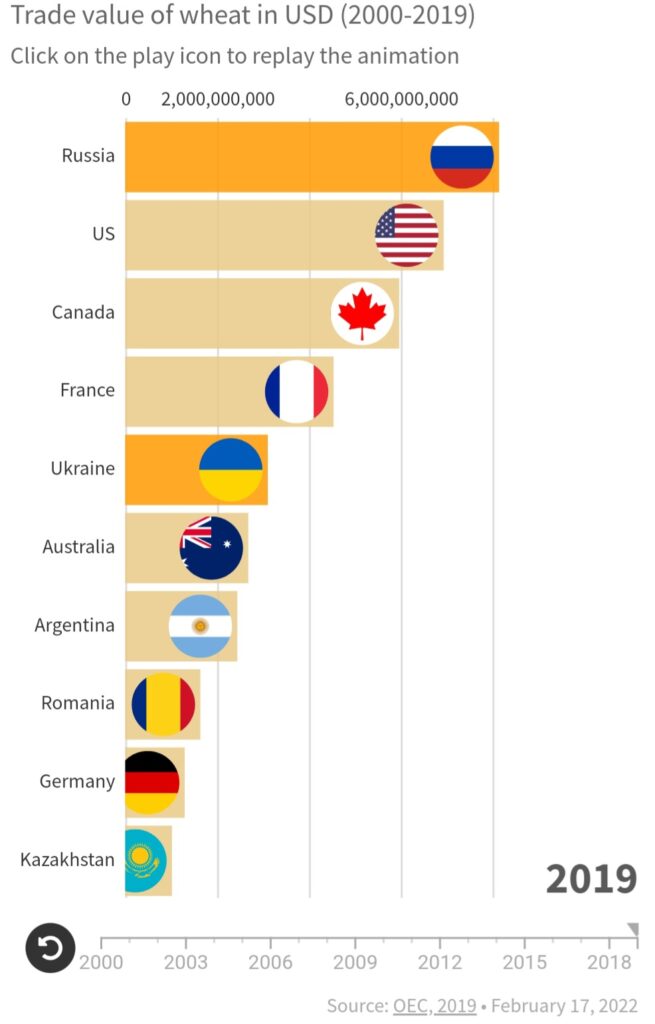
Ukraine: World’s fifth-largest wheat exporter
Ukraine is the fifth largest exporter of wheat, accounting for seven percent of sales globally in 2019.
Considered the breadbasket of Europe, 71 percent of Ukraine’s land is agricultural. It is also home to a quarter of the world’s ‘black soil’, or chernozem, which is highly fertile.
Wheat is linked to a painful history in Ukraine.
In 1932, the Holodomor or Great Famine, which saw millions of Ukrainians die of starvation, was the result of deadly political decisions by Joseph Stalin to collectivise agriculture and confiscate farmers’ land.
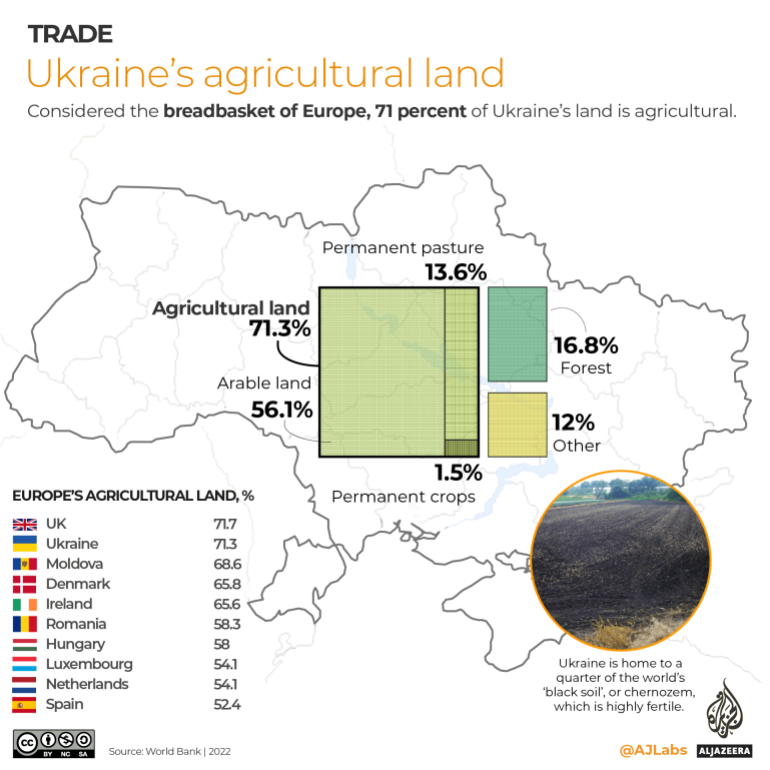
Russia and Ukraine’s chief exports
Russia exported $407bn in products and Ukraine $49bn in 2019.
While Russia is the world’s biggest exporter of wheat, among other products, Ukraine is the biggest exporter of seed oils.
Russia’s bilateral trade with Ukraine has tanked from its peak of almost $50bn in 2011 to $11bn in 2019.
Russia remains one of Ukraine’s biggest trade partners.
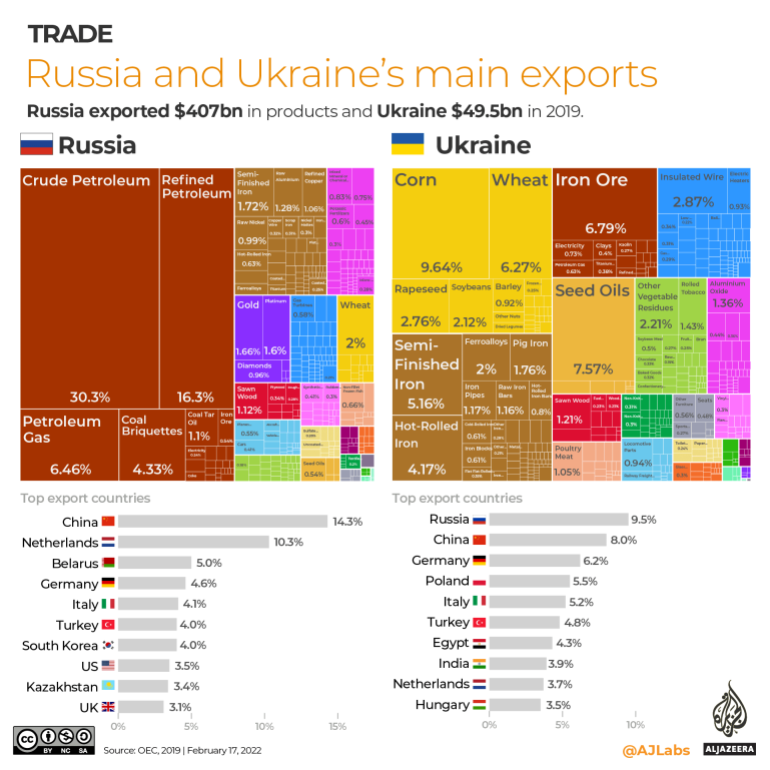
Major ports and the Black Sea
The Black Sea is a key geo-economic region for Russia and Ukraine, who rely heavily on the ports for agricultural and industrial exports.
For Ukraine, Odesa, Kherson and Mykolaiv are key ports for international trade flows.
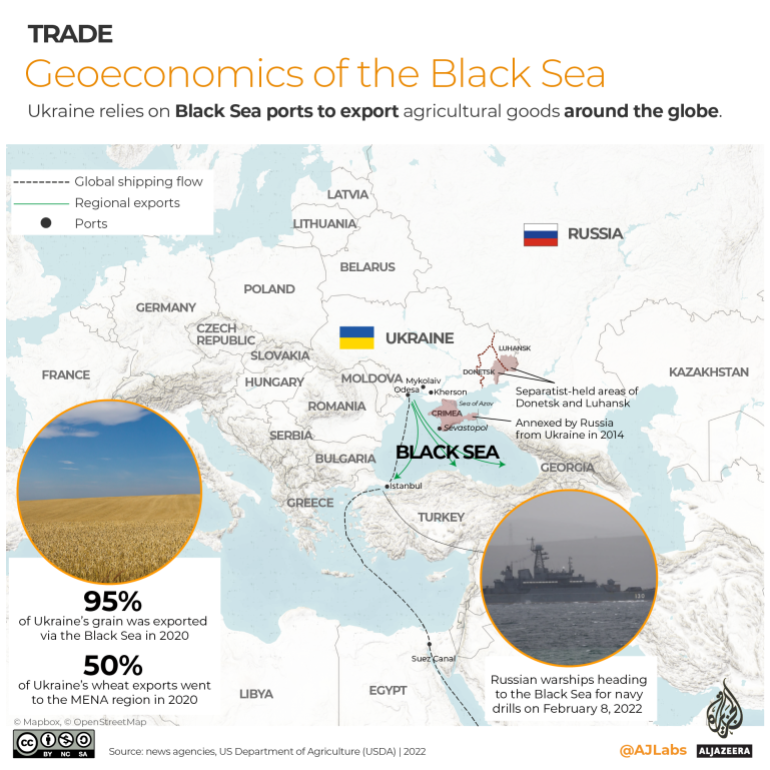
In the event of war, wheat and grain flows could be affected, as 95 percent of Ukraine’s wheat exports were transported via the Black Sea in 2020.
With the price of food already high due to inflation, importers may seek to find alternatives.
The Black Sea is a key region for Moscow. According to Carnegie Endowment for International Peace, a Washington-based think-tank focused on geopolitics, it would allow Russia to protect trade links with European markets as well as up the dependency of southern Europe on Russian oil and gas and act as a security buffer zone.
Credit | Al Jazeera

